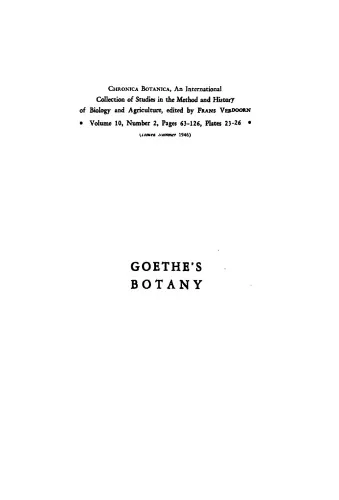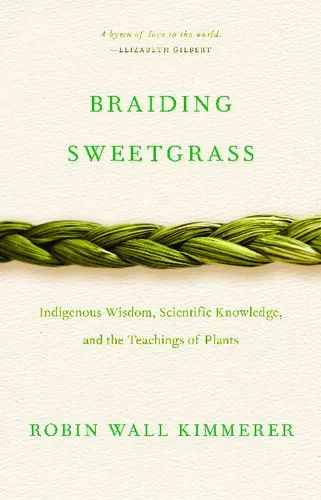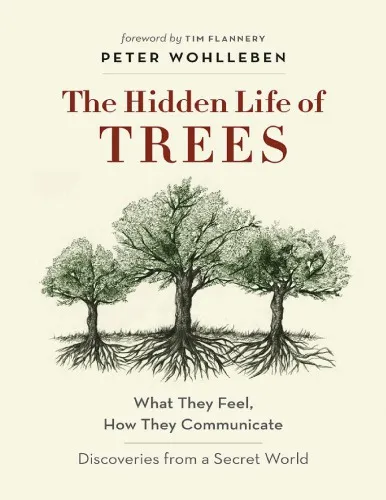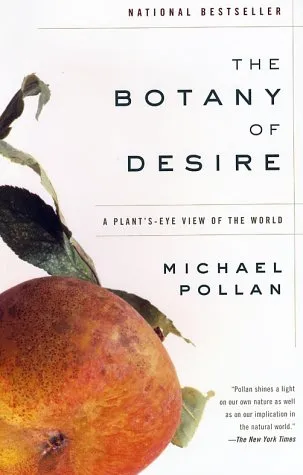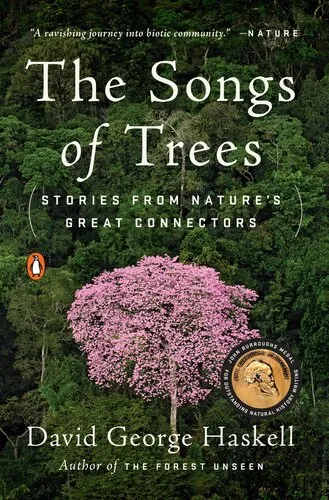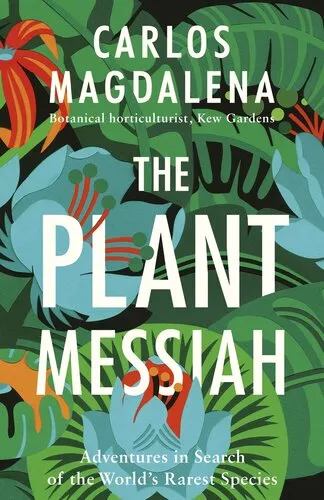Goethe's Botany: The Metamorphosis of Plants (1790) and Tobler's Ode to Nature (1782)
4.0
بر اساس نظر کاربران

شما میتونید سوالاتتون در باره کتاب رو از هوش مصنوعیش بعد از ورود بپرسید
هر دانلود یا پرسش از هوش مصنوعی 2 امتیاز لازم دارد، برای بدست آوردن امتیاز رایگان، به صفحه ی راهنمای امتیازات سر بزنید و یک سری کار ارزشمند انجام بدینکتاب های مرتبط:
معرفی اجمالی کتاب
کتاب 'گیاهشناسی گوته: دگرگونی گیاهان (1790) و اود طبیعت تابلر (1782)' یکی از آثار برجسته یوهان وولفگانگ فون گوته میباشد که ترکیبی زیبا و عمیق از علم و ادبیات به شمار میرود. این کتاب به بررسی دقیق ساختار گیاهان و پویاییهای طبیعت پرداخته و نگاهی نوآورانه به طبیعت و قوانین حاکم بر آن میافکند.
خلاصهای از کتاب
'دگرگونی گیاهان' مطالعهای نظاممند درباره رشد و توسعه گیاهان است. گوته در این اثر به پژوهش درباره ساختار گیاهان و فرآیندهای تحول آنان پرداخته و نظریه معروف خود یعنی "《leaf》 ابتدایی یا مرجع" را معرفی میکند. او بر این باور است که تمام گونههای برگ یک گیاه در مراحل مختلف تطور میتوانند به یکدیگر دگرگون شوند و این ایده نوین را در نظام طبیعت به تصویر میکشد. در کنار این اثر، 'اود طبیعت' توسط تابلر ارائه میشود که به زبان شعر به تحسین و تفسیر زیباییهای طبیعت، جذابیت و رازآلودگی آن میپردازد.
نکات کلیدی
- مطالعه تحولگرا و ساختاری از گیاهان و بیان اینکه چگونه بخشهای مختلف گیاه میتوانند از یک منشأ تکامل یافتهی واحد باشند.
- تاثیرات ادبی و فلسفی موجود در آثار گوته که علاوه بر علمی بودن، جنبههای زیباییشناسانه را نیز پوشش میدهد.
- نگاه منحصر به فرد گوته به پیوند بین طبیعت و ادبیات و بیان شاعرانه عناصر علمی.
نقلقولهای معروف از کتاب
"طبیعت معمای پیوستهای است که هر جزء از آن بخشی از کل را به تجلی میکشاند."
"همهی موجودات زنده در یک مدار عظیم تکامل و جابجایی قرار دارند."
چرا این کتاب اهمیت دارد
کتاب 'دگرگونی گیاهان' یکی از آثار پیشرو در ادغام دانش علمی با دیدگاههای هنری و فلسفی است. گوته با بهرهگیری از شناخت عمیق خود از طبیعت و اشتیاق به کشف ارتباطهای جدید، راه را برای درک بهتر فرآیندهای زیستی و نگرشهای نوین در علم حیات هموار کرد. این کتاب نه تنها برای علم گیاهشناسی بلکه برای تمامی علومی که در پی ترکیب علم، فلسفه و هنر هستند، یک منبع ارزشمند و الهامبخش محسوب میشود. بیداری زیبای طبیعت از خلال نگاه ادبی گوته، مخاطبان را به دنیایی از تأمل و شگفتی در باره جهان پیرامون دعوت میکند.
Introduction
In the late 18th century, Johann Wolfgang von Goethe, renowned playwright, novelist, and poet, ventured into the realm of natural sciences, offering profound insights into the world of botany. His work, "Goethe's Botany: The Metamorphosis of Plants (1790) and Tobler's Ode to Nature (1782)," is a testament to his curiosity and understanding of nature's intricate beauty. This book, a fusion of scientific observation and poetic reflection, explores the transformation and unity of plant life, while also celebrating nature through poetic expression.
Detailed Summary of the Book
The book is divided into two seminal works: "The Metamorphosis of Plants" and "Tobler's Ode to Nature." "The Metamorphosis of Plants" presents Goethe's botanical observations where he outlines his theory of plant metamorphosis. Across its pages, Goethe delves into how a single archetypal form, the 'Urpflanze,' serves as the blueprint for all plant forms. Through meticulous study and keen perception, he illustrates the fluid transformation of plant parts - from seed to bloom - showcasing a continuum of change governed by nature's inherent laws.
"Tobler's Ode to Nature," on the other hand, is a poetic homage to the splendor and diversity of the natural world. It reflects on human connection to nature and celebrates the universal spirit that pervades all living things. Together, these two works encapsulate Goethe's perspective on the natural world, blending scientific inquiry with artistic sensitivity.
Key Takeaways
- Interconnectedness of Nature: Both scientific and poetic narratives emphasize the interconnectedness and unity inherent in nature - an idea that significantly influenced later ecological and evolutionary studies.
- Transformation and Growth: Goethe's insights into the process of plant metamorphosis highlight the dynamic nature of life and growth, underscoring the adaptability and transformation observed in the botanical world.
- Integration of Science and Art: The book exemplifies how scientific exploration can be enriched by poetic insight, demonstrating a holistic approach to understanding the world around us.
Famous Quotes from the Book
"In this unfolding play of forms, we discern not only the rule of nature but also the breath of divinity, as if the divine breathed through it all."
"Nature is an ever-open book filled with wisdom, only asking us to read and marvel at each chapter it unfolds."
"The archetypal plant is the sum of all plants, past, present, and future, encapsulating the unending transformation within nature itself."
Why This Book Matters
Goethe's exploration into botany transcends the traditional boundaries of scientific literature. His work matters because it presents a radical shift in thought, introducing a deeply philosophical perspective to the study of plant life. By recognizing the intrinsic link between scientific pursuit and artistic expression, Goethe laid groundwork that would shape future scientific methodologies and ecological philosophies.
The themes encapsulated in "Goethe's Botany" resonate with contemporary discussions about sustainability and the importance of maintaining a harmonious relationship with the natural world. His reflections encourage a deeper appreciation for the complexity and beauty of life, urging readers to maintain curiosity and reverence for the myriad forms of existence surrounding them.
دانلود رایگان مستقیم
شما میتونید سوالاتتون در باره کتاب رو از هوش مصنوعیش بعد از ورود بپرسید
دسترسی به کتابها از طریق پلتفرمهای قانونی و کتابخانههای عمومی نه تنها از حقوق نویسندگان و ناشران حمایت میکند، بلکه به پایداری فرهنگ کتابخوانی نیز کمک میرساند. پیش از دانلود، لحظهای به بررسی این گزینهها فکر کنید.
این کتاب رو در پلتفرم های دیگه ببینید
WorldCat به شما کمک میکنه تا کتاب ها رو در کتابخانه های سراسر دنیا پیدا کنید
امتیازها، نظرات تخصصی و صحبت ها درباره کتاب را در Goodreads ببینید
کتابهای کمیاب یا دست دوم را در AbeBooks پیدا کنید و بخرید
1539
بازدید4.0
امتیاز0
نظر98%
رضایتنظرات:
4.0
بر اساس 0 نظر کاربران
Questions & Answers
Ask questions about this book or help others by answering
No questions yet. Be the first to ask!
